-
-
- Bridging Scales from Below: The Role of Heterogeneities in the Global Water and Carbon Budgets
- Increasing Occurrences of Cyanobacterial Blooms Driven by Climate Change Factors
- Carbon Capture and Utilization
- Integrated Coastal-Inland Flood Model for Climate Change
- Pathways for Sustainable and Climate-Resilient Planning of Water-Energy-Food Security Nexus
-
- Air Quality and Health: A Paradigm Shift
- Surface Water Quality and Emerging Contaminants
- Microbial detoxification of persistent organohalide pollutants (POPs)
- Nutrients Removal in Waterbodies via Sustainable Pathways
- Centre for Water Research (CWR) researchers join their forces with U of T researchers for microplastics pollution detection and control in water and wastewater
- Dealing with Hard-To-Treat Industrial Wastewater
- Valorization of Bioresources – Towards a Circular Economy
-
- Intelligent Traffic Diffusion Plan Generation, Effective Assessment and Dissemination Strategies
- Transforming Waste into Resources for Infrastructural Development
- Look-Ahead Integrated Geophysical Investigation System (IGIS) for Singapore Tunnels
- Next-Generation Airport Pavements with Full-Scale Instrumented Testing
-
- Centre for Advanced Materials and Structures
- Centre for Hazards Research
- Centre for Resilient Underground Infrastructure and Engineering (CRUISE)
- Centre for Transportation Research
- Centre for Water Research
- Centre for Resource Circularity and Resilience (CR)2
- Centre for Offshore Research and Engineering (CORE)
- Centre for Environmental Resilience
- Safety & Health Committee
- Completed Research Projects
- Research Brief
- Achievements (in the media)
Increasing Occurrences of Cyanobacterial Blooms Driven by Climate Change Factors
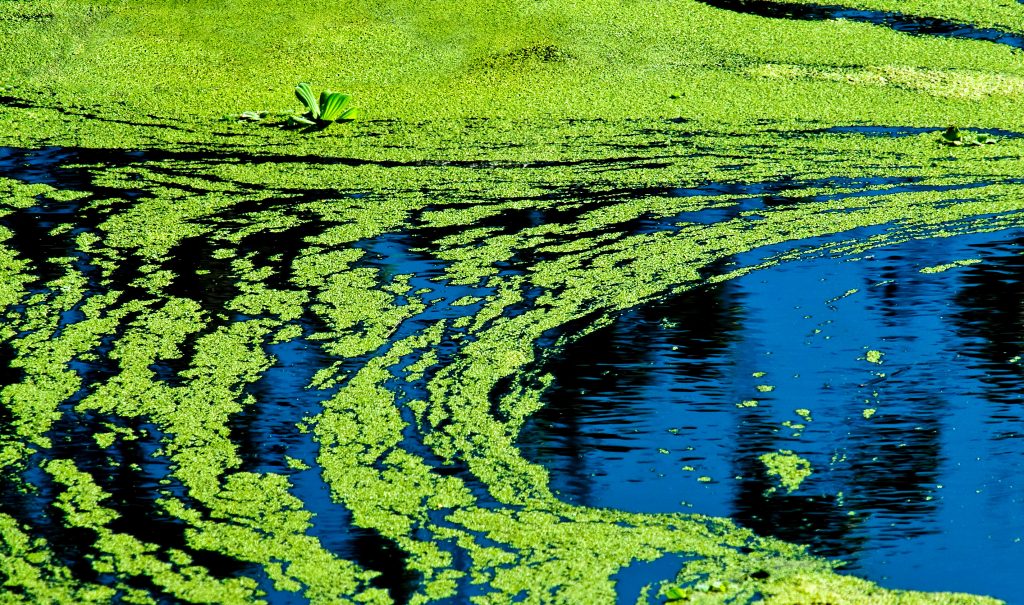
Harmful cyanobacterial and phytoplankton blooms have presented persistent threats to the sustainability of our water resources. With climate change, these occurrences are expected to increase in frequency and intensity. Our research aims to understand these impacts and to develop tools for managing their consequences. We adopt a multi-pronged approach that incorporates small-scale laboratory experiments with larger scale mesocosm studies and direct field monitoring of algal species and the metabolites (toxins, off-flavors) that they produce.
For laboratory experiments, we isolate various bloom-forming cyanobacteria from local waters to study their physiological responses to changing environments including temperature, pH, light, and nutrient supply. Temperature and pH can affect metabolism and other bio-chemical processes, but optimal ranges differ across species. Light and nutrients are resources needed for cell functions, but species similarly have various strategies to cope with changing availability of these resources. With climate change, environmental ranges are shifted, which in turn selects certain groups over others (e.g., warming temperatures are expected to favour warm-tolerant species over temperature-sensitive ones). These scenarios strongly favour pico-cyanobacteria, and our recent study of these dominant species made a major discovery that they could produce anatoxin and cylindrospermopsin—cyanotoxins that pose human health threats that were previously unknown in these species. Further investigation of associated protein sequences suggested that these traits may be shared by strains from around the world, suggesting that emerging bloom conditions under climate change scenarios may not currently be well understood.
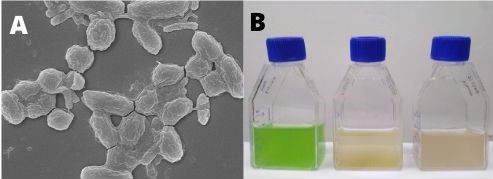
Fig. 1. Different pico-cyanobacteria (A) imaged using SEM and (B) showing different colour physiology
We also investigate ecological interaction within natural waters. Resource competition and allelopathy are important processes that regulate the rapid growth of a particular species. Cyanophages may also be important as selective viruses that only proliferate and infects target cells when they become abundant in number. Recently, we have demonstrated under controlled laboratory conditions that cyanophages can exert a noticeable and significant effect on target cultures, demonstrating its broader importance within natural waters.
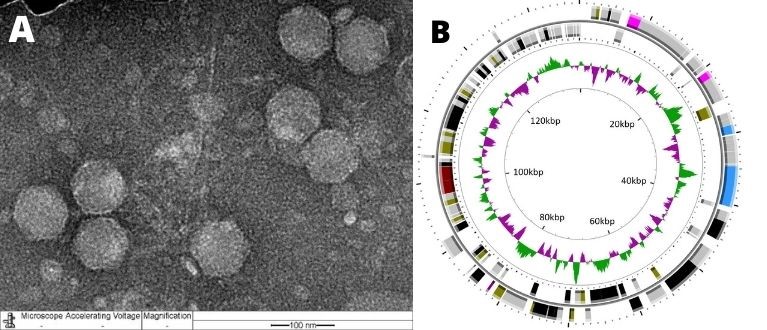
Fig. 2. Novel cyanophage discovered that infects the cyanobacterium Pseudanabaena sp.: (A) imaged using TEM and (B) genomic map
These efforts have been complemented by improvements in our chemical analyses where we have developed improved protocols to detect a variety of cyanotoxins and off-flavour compounds, as well as novel and emerging contaminants.
By comprehensively understanding the sources and changes in bloom dynamics in response to environmental factors, we construct models for predicting perturbations to the aquatic system. In this way, our research provides us with information and tools that can mitigate the climate change outcomes in our water bodies. We have demonstrated that climate change will affect the biology, ecology, and chemistry of microbial dynamics within our waters. Our research in managing these consequences continues to be driven by laboratory, fieldwork and modelling studies, coupled with new methods and technologies that allow for the detection and monitoring of emerging factors.
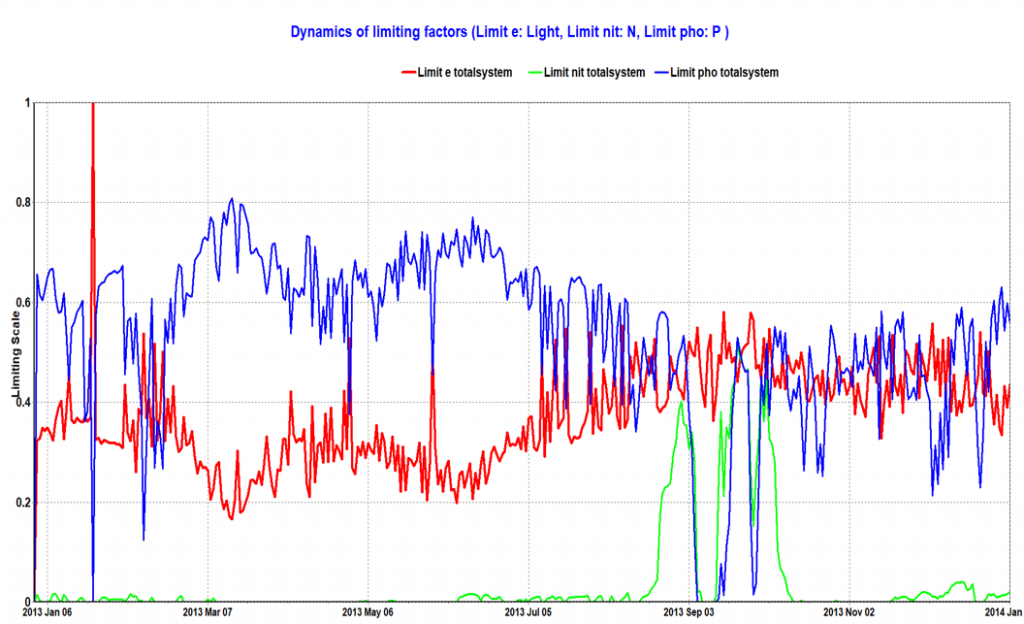
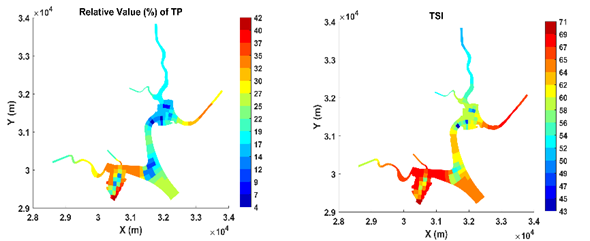
Fig. 3. Modelling of algal blooms and their metabolites
For more details, please contact:
Assoc Prof Gin Yew-Hoong, Karina
Email: ceeginhy@nus.edu.sg

